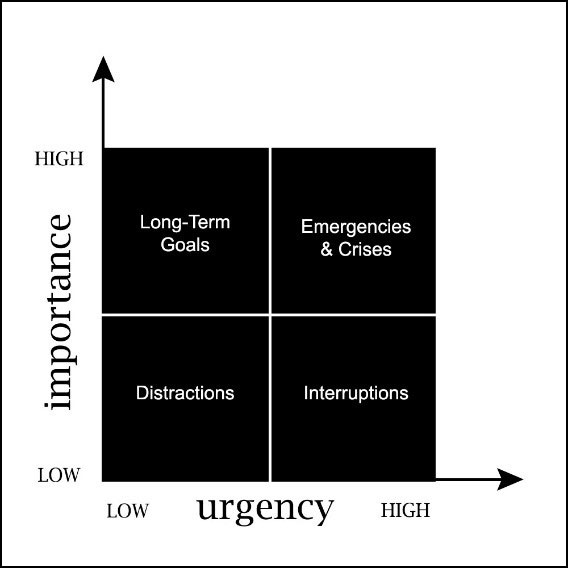Understanding the introvert & the extrovert
We meet different people all the time – at work, through friends, at the gym, out shopping, walking the dog, waiting for our local talented barista to whip up our favourite coffee. We seem to ‘click’ with some people and not so much with others. And that’s ok! We’ll either look out for the chatty “chai latte-made with leaves not powder-almond milk-extra hot” regular to engage with, or steer away from the owner of the short haired black dog next time we’re at the off-lead park. It’s natural personal preference. Just like we have a natural preferred ‘at work’ style. The important thing to understand is, there is no right or wrong personality ‘type’. In managing people and working productively, it’s more about striving to understand each other’s differences and similarities. Why do you or I or they, have that particular working style or preference? How do we work together effectively to produce the best results collaboratively?
During 2020, many people have had the opportunity to work from home. Or, during 2020, many people were forced to work from home. It depends on your perspective. Some of us bathed in a magical sense of permission to independently create and evolve peacefully on our own (aka introverts). While others were preparing themselves to engage in the foetal position as they tried to navigate the period of adapting to isolation (aka extroverts). Our ‘high energy’ extroverted team members need some extra care during isolating times. They crave being part of a team or a bigger picture and we know that video calls won’t completely dissipate the feeling of being ‘on my own’. Some felt like they were dangling precariously on their own waiting for the wind to blow, or were at least aware of a deficiency in comparison to their usual work environment. Fortunately though, the reality is that the majority of us are sitting somewhere along that continuum and facing very different challenges depending on where we sit.
Extroverts and introverts communicate differently and have different work styles and preferences. It’s because of this, that some unease, discomfort, misunderstanding and even conflict can occur between individuals. The way around it, is to understand who we work with and why they do the things they do. For example, an extrovert will require high levels of external stimulus to develop their thoughts, thriving in group settings. Whereas an introvert gains energy from within, preferring time alone to focus and develop ideas. When working together or within the same team, if one doesn’t understand the preference of the other, the respect and allowance for what the other person needs to perform at their best can become precariously low, causing frustration.
The perception of personality and behavioural traits are all in the eye of the beholder. Depending on where we sit along the continuum of introversion to extroversion, our perception of the same person’s behaviour changes. A highly extroverted personality may see an introverted personality as unfriendly, shy or antisocial. Whereas a sister introvert will probably innately understand the same person as needing time alone to recharge, create and evolve ideas and know they will eventually share their creation once they’ve thought it through and are completely comfortable with what they’re presenting. On the other hand, an introverted personality may see someone with highly extrovert type behaviours as impulsive and domineering, versus well considered or thoughtful. Whereas a brotherhood extrovert is more likely to know that the reason for their seemingly boisterous expo is actually a means to absorbing thoughts and collaborating with others to fuel their own creativity tank, enabling them to productively thrive through their preference of group projects and wider sharing of ideas.
They both work.
The challenge is in changing our own mindset around what we believe is the only way to work to achieve goals. Staying in your own mode is simply limiting. I know it’s comfortable, like a warm feather doona on Sunday morning in the middle of winter. No one wants to throw that doona back. But to get stuff done, we need to fold back the comfort and open ourselves up to the possibility that something different, something uncomfortable, will work even more effectively. The alternative is that we can make the limiting conscious choice to simply be annoyed and become frustrated by the characteristics we don’t like. But who wants to be a part of that team? In my experience, we generally want to be happy at work and when we dig out the curiosity shovel with the objective of learning from each other, happy harmonious teams are an encouraging result.
Introverts and extroverts can certainly learn various skills from each other. We can also challenge ourselves to become more self-aware of our own work preferences and styles. By becoming aware of our own behaviour and the behaviour of others, we can start to ‘learn’ behaviour that is more advantageous in getting us to where we want to be. For example, if you’re the type of person that becomes completely engrossed in the task at hand and so feverishly focused that you prefer to put off engaging with your team, seeing this engagement as a distraction – becoming self-aware may set you up to becoming more conscious of the collaboration needs of your team and come up with ways to engage every now and then. It’s not about ‘changing’ personalities though. It’s about being aware of your own needs and the needs of others, along with respecting and valuing your own strengths, alongside the strengths of the people in your team. Really simple tweaks as a result of self-awareness can go a long way in achieving outcomes.
Beware of stereotyping
Introverts are known to be brilliant thinkers whose contributions will most likely be well developed – therefore enabling them to also be great communicators. They may take their time before they share, but don’t make the costly mistake as a manager in overlooking your internally driven creative craftsmen as great communicators. The extroverts in your team who are known to think out loud (& sometimes loudly) on the other hand, may not be your most valuable presenters. Being able to talk doesn’t always mean you’re the most effective speaker or representative of an internal team’s ideas. It’s worthwhile understanding that extroverts process information interactively and therefore can be seen to ‘jump into’ a discussion before processing fully what anyone else has said. It doesn’t mean they don’t care, it’s simply a way of processing information. The more extroverted the person is, the more these types of behaviours will stand out for others.
When it comes to brainstorming and group decision making, we automatically think of extroverts as the most worthwhile contributors, given their brains are wired to think and process information through the provision of external stimulus such as speedy discussion, having fun through communicating with others and darting, weaving, changing their ideas as the discussion evolves. However, it’s wise to recognise the more introverted members of the team as key contributors to group discussion and brainstorming, as their ideas will be thoroughly thought through before presenting their ideas, likely making their input solid and valuable. The key is allowing those sitting on the introverted side of the continuum more time and space beforehand and after the group meeting (ideas don’t stop just because the meeting has ended!) to allow individual reflection, thinking, writing and even some one on one discussion.
More extroverted team members are much more comfortable in social settings and therefore make great networkers, often being a valuable ‘go to’ person for initiating relationships between other people. Introverts on the other hand can be seen as less valuable in social situations. Again – beware of stereotyping. This can be a dangerous assumption to have about a more introverted personality type given their efficient internal processing skills, which can possibly make them better collaborators. Introverts are also arguably more receptive to other people’s ideas, displaying a more serious, deeper interest and consideration style.
Personality traits and collaboration
Human behaviour analysis is highly relevant to improving collaboration and teamwork. Our work preferences affect how we behave, and how we behave affects the way we work with others. When we collaborate successfully, we’re not only more likely to achieve individual, team and business goals, but in a harmonious and highly effective way.
Making everyone aware of the variation in individual work preferences and behavioural traits is the first step into effective and cohesive team development. From our experience, once team members understand and empathize, they synergize.
We highly recommend implementation of the globally recognised and validated behavioural profiling tool Facet5 in conjunction with any team development, as it provides exponential depth to our own self-awareness and to the understanding of our team members and why we behave the way we do. Facet5 identifies how people within teams differ in their behaviour, motivation and attitudes, and more importantly, what can be achieved. When cultivating best practice as a team within the workplace, Facet5 gives a deeper insight into our team’s orientation. This understanding enables action plan development through insights gained into how your team approaches work and where it focuses attention in the following areas:
- Decision making – who in your team is a ‘reflector’ or a ‘decider’?
- Implementation – who prefers ‘understanding’ before ‘acting’ and vice versa?
- Generating ideas – where do you sit on the continuum of ‘practicalities’ vs ‘possibilites’?
- Evaluation – do you prefer a ‘revolution’, or do you prefer to ‘evolutionise’?
- Emotionality – what affect do ‘tension’ and ‘apprehension’ have on the way you work and interact with your team?
These vital team elements are explored in our Team Development workshops in detail and revisited in our Growth Mindset workplace training to explore the continuum of growth and fixed mindset behaviours. This team development foundation further enables the identification of unrealised potential through growth mindset practices.
So in answering the question “Do you have too many introverts or extroverts in your team?”, there’s no right or wrong personality type, however you do want to understand the dynamics of the team along the continuum of introvert and extrovert – remembering the majority of us fall somewhere along that continuum and there are rarely absolutes. What do you need in your team and for what purpose – ie your why? In Facet5 terms, one of the areas we look at is Energy and how this affects our preferred implementation style.
People with lower energy for instance may show these traits, with a work preference to understand:
- Thinks ideas through well
- Understand in depth
- Keep discussions to a minimum
- Present salient points
- Debate at a specialist level
- Rarely discuss personal issues
- Prefer private research to open debate
In comparison people with higher energy will be more likely to show these behaviours, with a work preference to act:
- Get started quickly
- Talk and discuss freely
- Show obvious enthusiasm
- Are involved from the beginning
- Are easily distracted
- Interrupt others
- Lose focus and direction
If you’re not sure where to start focusing on your own personality profiling or helping your team collaborate and thrive through insights into self and team behaviours, we already have a plan for you. We’ve done it before (lots!) and can take the pain out of the ‘doing’.
Sound great? Unpack more than the usual tips on team development. We explore a new approach using valid, reliable and credible psychology into identifying barriers in team efficiencies, leveraging team strengths and how individual personalities contribute to team dynamic. You’ll even get to view a short video sneak peak into our Team Development workshop with our own highly sort after trainer and registered organisational psychologist Michelle Cieciura.
Contact Us

 By keeping a time log (hang in there with me for a minute!) you start to understand where your ‘busy-ness’ is focused. To gain a useful perspective, I encourage people to keep a log for at least a couple of weeks. Just bring up a digital calendar and make some notes hour by hour. I know it sounds mundane, but let’s turn your perspective around so that you can actually get some value out of this critical step – it will serve you for a very long time to come. Think of your 60 seconds of writing per hour as a trigger to take a break. Taking regular breaks throughout the day is proven to increase productivity. So set your hourly timer for the next couple of weeks and spend a couple of minutes every hour writing down what you did, noting if it was low or high importance with low or high urgency.
By keeping a time log (hang in there with me for a minute!) you start to understand where your ‘busy-ness’ is focused. To gain a useful perspective, I encourage people to keep a log for at least a couple of weeks. Just bring up a digital calendar and make some notes hour by hour. I know it sounds mundane, but let’s turn your perspective around so that you can actually get some value out of this critical step – it will serve you for a very long time to come. Think of your 60 seconds of writing per hour as a trigger to take a break. Taking regular breaks throughout the day is proven to increase productivity. So set your hourly timer for the next couple of weeks and spend a couple of minutes every hour writing down what you did, noting if it was low or high importance with low or high urgency.
